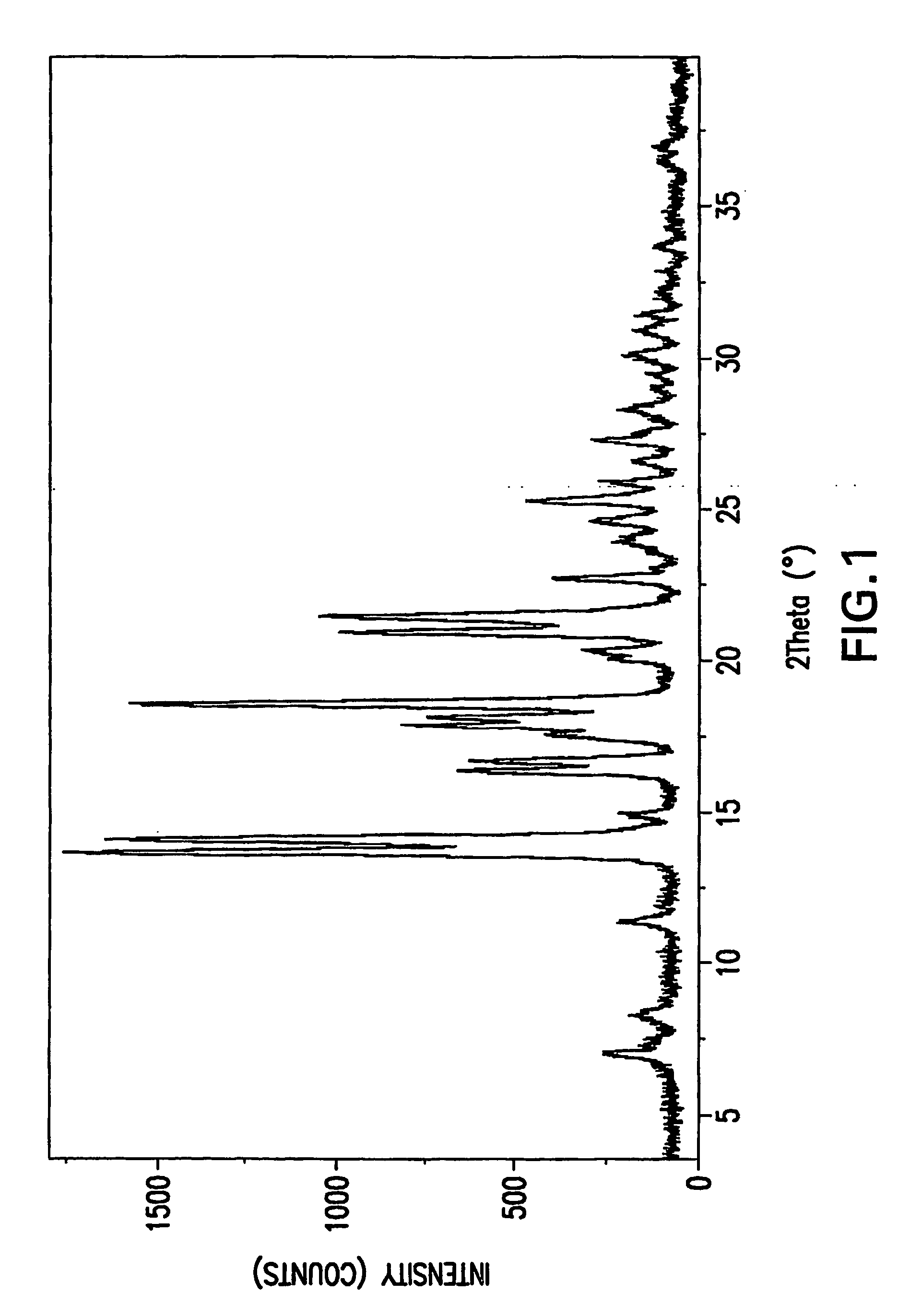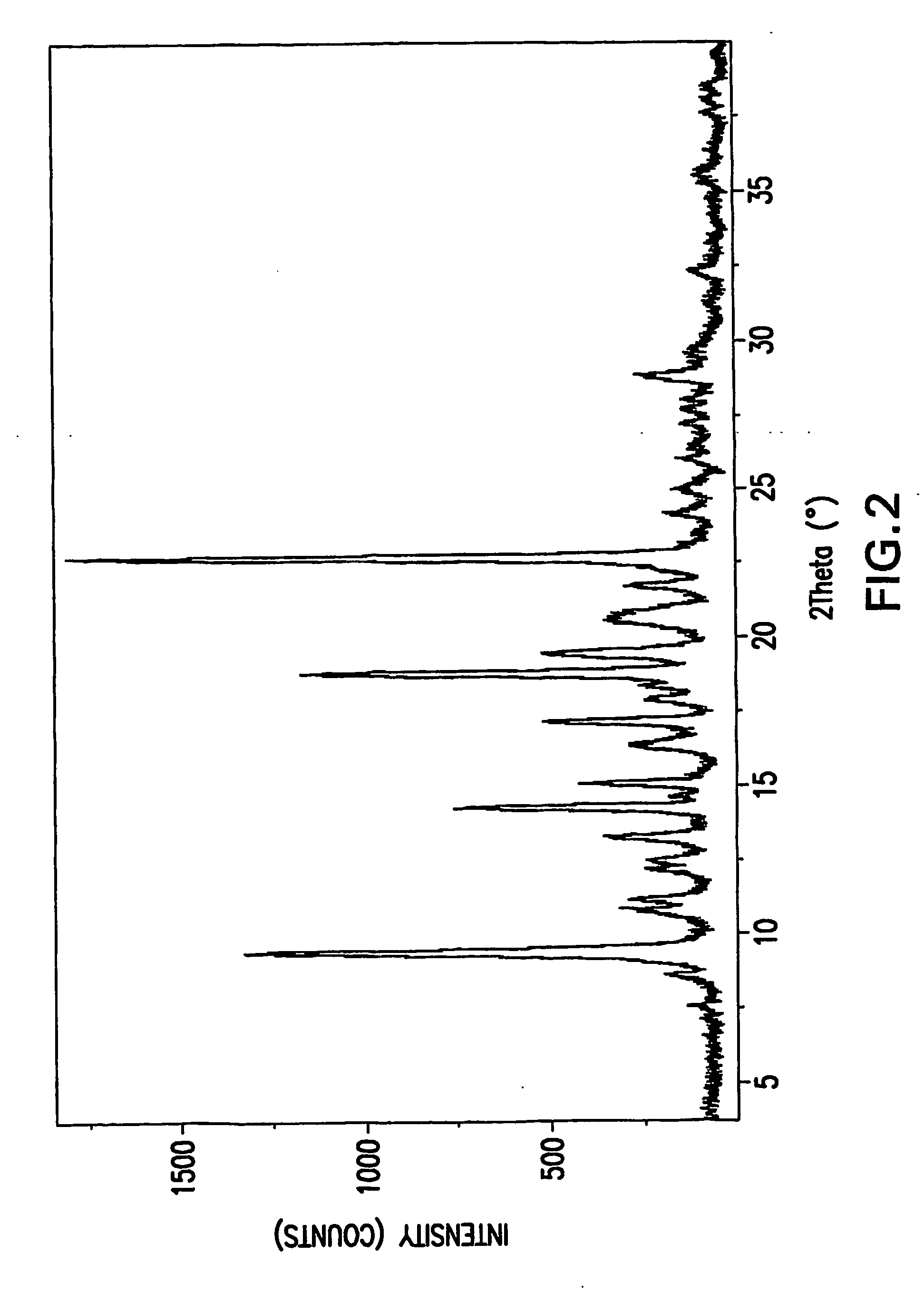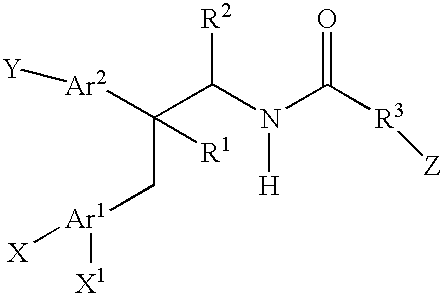Substituted amides
a technology of amides and amides, applied in the field of nuclear imaging techniques, can solve the problems of limited human use, limited human use, and inability to obtain much of this information by other means
- Summary
- Abstract
- Description
- Claims
- Application Information
AI Technical Summary
Benefits of technology
Problems solved by technology
Method used
Image
Examples
reference example 1
18F]fluorobromomethane and [18F]fluorobromomethane-d2
Step A Radionuclide Production ([18F]fluoride)
[0342]18F− was obtained via the nuclear reaction 18O(p,n)18F. This was achieved by bombarding a silver target containing 18O enriched water with accelerated protons (11 MeV). A Cyclotron (Siemens RDS 111 cyclotron) and systems for the production of primary labelled precursor are used for the radionuclide production. The [18F]F− was placed on an anion exchange resin for transportation to the radiochemistry laboratories.
Step B Removal of Water from 18F−
[0343] The [18F]F− resin was eluted with 1.5 mL of a solution of 80:20 MeCN:potassium oxalate (aq). The potassium oxalate solution was made by combining 0.05 mL of (200 mg K2C2O4 / 3 mg K2CO3 / 5 mL H2O)+0.25 mL H2O+1.2 mL MeCN. This aqueous [18F]F− solution was treated with 0.2 mL Kryptofix222 (36 mg / mL MeCN). The solvent was removed under vacuum / heat / argon flow and the [18F]-KF was further dried by 3 azeotropic distillations with acetonit...
reference example 2
2-[18F]fluorobromoethane
[0345] The residue obtained after drying of the [18F]-KF was treated with a solution of bromoethyltriflate (5 μL) in 1,2-dichlorobenzene (0.7 mL) and heated at 115° C. under an argon stream. The [18F]FCH2CH2Br produced was distilled out of the reaction apparatus into the solution containing the precursor to be alkylated.
reference example 3
[11C]iodomethane
[0346] [11C]CO2 was produced using a Siemens RDS-111 cyclotron. An N-14 gas target containing 5% oxygen is irradiated with an 11 MeV proton beam generating [11C]CO2. The [11C]CO2 was trapped at room temperature inside ⅛″ o.d. copper tubing packed with carbosphere, isolated from the atmosphere by switching a four-port, two-way valve, and set inside a lead container. The [11C]CO2 was transported to the radiochemistry laboratory and converted to [11C]MeI using a GE Medical Systems PETtrace MeI Microlab.
PUM
| Property | Measurement | Unit |
|---|---|---|
| volume | aaaaa | aaaaa |
| time | aaaaa | aaaaa |
| time | aaaaa | aaaaa |
Abstract
Description
Claims
Application Information
 Login to View More
Login to View More - R&D
- Intellectual Property
- Life Sciences
- Materials
- Tech Scout
- Unparalleled Data Quality
- Higher Quality Content
- 60% Fewer Hallucinations
Browse by: Latest US Patents, China's latest patents, Technical Efficacy Thesaurus, Application Domain, Technology Topic, Popular Technical Reports.
© 2025 PatSnap. All rights reserved.Legal|Privacy policy|Modern Slavery Act Transparency Statement|Sitemap|About US| Contact US: help@patsnap.com



